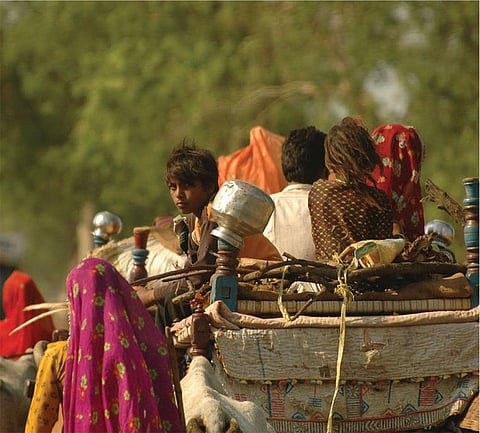Low rain spurred 10% of 1970-2000 migration increase: Report
Rainfall variability is expected to be one of the contributing forces in migration, according to a new World Bank report released 23 August, 2021.
Rainfall deficit is linked to approximately 10 per cent of the increase in global migration between 1970 and 2000, the report said.
Water shocks affect not only the number of people who move but also the skills they bring with them, said the report. Migrants who leave regions with lower rainfall and frequent drought usually possess lower educational levels and skills than other migrant workers, implying significantly lower wages and less access to basic services at their destination.
The report, titled Ebb and Flow: Volume 1. Water, Migration, and Development provided the first-ever global assessment of the impact of water on migration.
Researchers studied data of over 442 million individuals from 189 population censuses in 64 countries between 1960 and 2015.
Using a machine-learning model, they analysed how strong rainfall deficits, as measured by periods of low rainfall relative to long-run averages, are related to migration decisions.
This report focuses on changes in water availability that are induced by rainfall shocks, a term used here to refer to precipitation significantly above or below the long-run average for that region.
Rainfall shocks can be of both the wet kind, in which a region sees significantly above-average rainfall, and the dry kind, in which a region sees significant rainfall deficits.
Dry rainfall shocks can translate into water deficits when they lead to a reduction in available water supplies in lakes and reservoirs.
The migration response to rainfall deficits varies significantly, depending on country income, with the poorest 80 per cent less likely to migrate in the face of these shocks.
The report also found that workers who move from rural to urban areas in developing countries because of drier climate conditions are less likely to have high education levels.
These workers are typically less productive. Wetter conditions are not found to have any consistent effect.
In rapidly urbanising middle-income countries, droughts are found to increase the flow of lower-skilled workers from rural to urban areas, the report said.
The impact of day zero events are far more widespread than previously believed and can significantly slow urban growth, the report highlighted.
Some of the world’s megacities like Chennai, Sao Paulo (Brazil) and Cape Town (South Africa) have already faced 'Day Zero' — a drying up of water supplies.
As of 2019, 17 countries in total are experiencing extremely high levels of baseline water stress, according to data from the World Resources Institute (WRI).
The Middle East and North Africa regions, home to 12 of the 17 countries, are facing extremely high stress. The migrants who travel to cities to avoid the impacts of rainfall variability may find themselves in cities that offer fewer economic opportunities.
No single policy can be completely effective in protecting people and their assets from water shocks. The report puts smart policy options that target both people and places to improve livelihoods and turn water-induced crises into opportunities for growth.
Climate-smart agriculture and farmer-led irrigation can buffer rural livelihoods from climate change and increasing rainfall variability while minimising the environmental footprint.
Water reallocation may offer another solution for ever-thirstier cities. Better urban planning is sorely needed.
With limited resources, governments need to choose policies that are most effective in dealing with the adverse consequences of rainfall-induced migration, especially in the fiscally constrained context of the novel coronavirus disease (COVID-19) pandemic.


